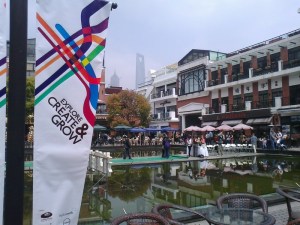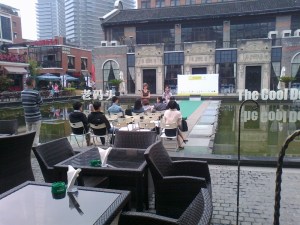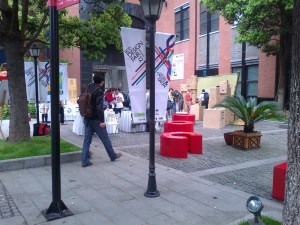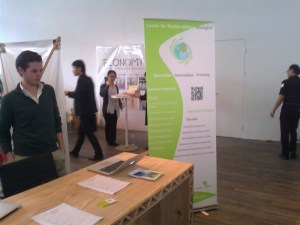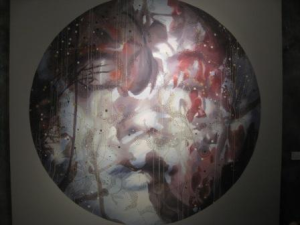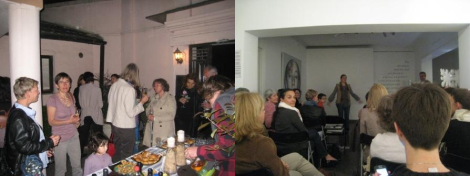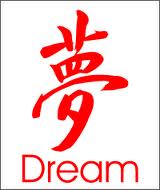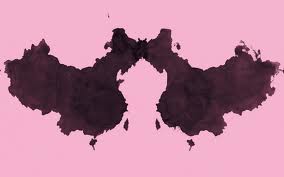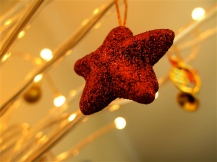May 19, 2012 New Eco Design Fair- New To Go
The design fair was held on the 14th of April in the Waterhouse at South Bund. The location was superb and the weather lovely. The fair kicked off at 10 o’clock and when I arrived at noon, the energy was palpable.
The fair consisted out of several areas. We began our tour by checking out the Eco Stage .
where a lecture was being given about responsible products and services.
In the Urban Farming section, a demonstration was being given on the proper seed planting techniques.
Adjacent to the Urban farming section, there was a stage providing information about eco values.
Leaving no stone unturned, the Eco Design Fair even had a children’s section, replete with an uber-fun Eco Kid’s Castle and an eco playground built from (recycled) paper boxes.
At the Eco Marketplace, there were many different entrepreneurs/expats demonstrating and promoting their environmentally-friendly products. The were also a number of educational initiatives, including a booth promoting short-termsix week internships of six weeks and three-week summer courses in Shanghai, all courtesy of the Shanghai Centre for Sustainability.
Another stall offered information on nutrion and health-food products, including their two distribution points in Shanghai.
Another stand promoted fabulous bamboo displays, all of which were built in ecologically-sustainable ways.
The Eco Design Fair was a great event and certainly made for an afternoon well-spent. Basking in the very lovely weather, one could certainly appreciate the our wonderful planet!
Key information:
50/50 Chinese/International
1 day event with a lot of lectures, fashion walk and workshops, a big market
5th time organized (1st time in 2008)
location near the huangpu river
very big superficy for all the event (maybe appr. 10 000sq m)
- Leave a comment
- Posted under bazaar, eco, events, expat, shanghai, small business
May 7, 2012 APM: The Leper Conference
Last Monday, April 16th, we had the pleasure to attend a conference organized by APM a charity organization that does a lot of projects for Chinese people. That day, we could see from our eyes an example of a project they carry on: The lepers in China.
The conference started at 7 o’clock in the evening at 22 Fumin road near to the Jing’an Temple, first there was a cocktail for half an hour, with a snack and a drink, in which the visitors could talk to each other and walk across the gallery and enjoy the art at the location where the lecture was given.
The actual lecture started at 7:30 and the guest speaker got introduced. The guest speaker was a priest who helped people suffering of leper and who lived in a separated leper city. He explained that leper is a symptom that breaks down peoples nerve system, and results in dying body parts which they eventually will lose by amputation or falling off.
The people suffering of leper often get banned and abandoned by there family and friends so that they get really isolated. The sickness could also eliminate their sight and hearing so that they get isolated even more. It is still unknown how this disease is being transmitted, by blood, breath or touch excetera. However it is certain that a dirty and unclean domestic situation is possibly blamed for the transmission of leper.
The lecturer showed several pictures of people suffering of leper, and their living situation in the leper village. In order to get a good sight of the situation; after the lecture there was time to ask questions. For the ones who did not speak French there was a translator during the lecture.
It was a very interesting event and we certainly got more wise about the discussed topic. Great to see that people take care and putting effort in helping other people who are suffering and incapable of helping themselves, due to a lack of financial resources or knowledge.
- Leave a comment
- Posted under charity, conference, events, expat, organization
April 17, 2012 Will the Chinese Dream Replace the American Dream?
The American Dream has long been held up as the model for social mobility, allowing people from disparate backgrounds and varying levels of destitution to reinvent themselves. As first identified by a visiting Alexis de Tocqueville in his 1831 treatise, Democracy in America, the United States, unencumbered by class history or ethnic determinism, offered an unparalleled avenue for newcomers to advance in the world. In the years following de Tocqueville’s pithy analysis, tens of millions made the journey, as immortalized in Emma’s Lazarus’s 1883 sonnet, “The Great Colossus”:
“Give me your tired, your poor, Your huddled masses yearning to breathe free”
Many of these immigrants were able to establish highly-successful enterprises, rising from poverty to opulence in a single generation. Andrew Carnegie, born in a weaver’s cottage in rural Scotland, would become America’s greatest steel magnate and philanthropist. More recently, immigrants such as super-investor George Soros and Google co-founder Sergey Brin were able to achieve tremendous success. With a culture prizing risk-taking and unconventional ideas, the US has given rise to countless creative businesses, making many people wealthy in the process. Class background was no impediment to success; many of the nation’s more successful business people, including both Bill Gates and Warren Buffet, would hail from solidly middle-class backgrounds. Even for those not engaged in entrepreneurial risk-taking, the American Dream guaranteed at least a slice of the American pie: a house with a backyard for barbeques, two cars in the garage, and the periodic family vacation.
Despite the manifold success stories, the American Dream is starting to show some signs of fraying. An OECD study showed social mobility to be lower in the United States than in many European countries, even with the US’s historical absence of class or ethnic legacy. As Charles Murray presents in his controversial new book Coming Apart, America has become heavily divided between its upper and lower income brackets, with sharp divergences not just in income, but in health, lifestyle, religious observance, and divorce rates. In 1931, historian James Truslow Adams defined the American Dream by stating that,”life should be better and richer and fuller for everyone, with opportunity for each according to ability or achievement.” Adams, however, does issue the caveat that, “it is not a dream of motor cars and high wages merely, but a dream of social order.” For many outside the rarified air of the top income brackets, this ideal has begun to slip out of reach
Furthermore, with comparably-slow growth rates and a financial sector still wounded by the crisis of 2008, opportunities for ambitious entrepreneurs are fewer and further between. Although the US has shown impressive signs of rebounding in recent months, crystallized by the Dow hitting a symbolic 13,000 this past week, it is still a mature economy with indebted consumers unable to max out their cards out any further. Housing starts and mortgage intermediation are still sclerotic. Thus, for those with a bit of cash, an appetite for risk, and the ability to dream big, the time has come to look elsewhere.
And where better to look than the Middle Kingdom. With a population of 1.3 billion, rising incomes and education levels, and a government enamored with investment, China offers a cornucopia of opportunities for the aspiring impresario. As the crowded expat pubs of Shanghai and Beijing can clearly attest, many have already taken the plunge, teaching English, studying Chinese language, or coming on assignment from their home countries. Although the percentage of foreigners actually starting their own businesses is relatively small, being in an environment of high growth rates, massive construction projects, and nouveau riche tycoons rolling around in black S-classes is enough to make any displaced foreigner feel like a development guru with his water-cooler buddies back home.
Amongst the many records on the horizon for China in the coming years will be surpassing Japan to become the world’s largest market for luxury goods, expected to happen by 2013. Shopping malls are being built with alacrity and BMW’s are quickly replacing bicycles along the nation’s broad avenues. All of these developments inevitably beg the question of where this wealth is actually coming from. Although research has confirmed that China’s GINI coefficient (wealth inequality) is rising, how does this portend for equal opportunity in getting ahead? Furthermore, with such impressive growth in virtually every sector imaginable, is it possible to rise to success from the lower rungs of society, achieving what is now being called the Chinese Dream?
How would we define the Chinese Dream? According to Helen H. Wang, author of The Chinese Dream, a simple definition is tough to come by. Although the country’s middle class is growing and estimated to reach 800 million within the next 15 years, Wang argues that being part of the global middle-class should not be conflated with the Chinese Dream, as the country’s values are imprecise. Shaun Rein, marketing consultant and author of the provocative new book, The End of Cheap China, finds the Chinese Dream inherently more aspirational than its American counterpart. Rein notes that brands marketed as being “middle class” have typically done poorly in China, as many Chinese see middle-classness as pedestrian. To them, middle class is but an ephemeral stop on their way to becoming wealthy.
Since the dawn of Reform and Opening in 1978, the Chinese Dream has come to incorporate foreigners. Mark Henry Rowswell, known affectionately to his legion Chinese fans as Da Shan大山, has been a staple of the Chinese media since his acclaimed appearance on CCTV’s 1988 New Year’s gala. Frenchman Julien Gaudefroy has also had phenomenal success in China, utilizing his perfect Mandarin to host an instructional language video, as well as land his own talk shows “Foreigner’s Viewpoint” and Foreigners Watching China.” A number of less talented foreigners have thrown their hats into the entertainment ring, with sundry results.
Others have brought their business acumen to the Middle Kingdom. Sabrine Sinkora, came to Shanghai from France in 2006, establishing a highly-successful children’s clothing company, Souris-Nous. Combining svelte French style with the bouyant prospects of the Chinese marketplace, Sinkora has been able to achieve in China what would not be possible at home. Christophe Danteisse, too, has synthesized the best of East and West and found his way in the Middle Kingdom. The French-born musician has been fascinated with the Middle Kingdom since he was a young boy and gained proficiency with the language from an early age. In deciding where to establish his performing career, it was a no-brainer for Danteisse. With a friendly business environment, a budding middle class with an affinity for French tunes, and his rare multilingual performing skills, China offered prospects other places couldn’t. For many foreigners like Danteisse, the Chinese Dream is quite real and, with hard work, perspicacity, and maybe a bit of trial and error, anything is possible.
However, in China, just as in the United States, perpetuating the dream of social and economic advancement looks problematic. Both countries have actually seen income inequality increase rather than decrease in recent years, impeding social mobility and leaving some behind. Furthermore, the social segregation between the haves and have-nots in each country has led to more deeped-seeded inequality. Well-off parents send their children to better schools, including supplemental instruction and tutoring in music and the arts. They are also increasingly living in different zip codes, shopping at different stores, and receiving their news from different sources. Institutional factors such as failing urban schools in the United States and the hukou system in China only exacerbate this inequality.
Furthermore, as Apple’s recent legal troubles and the Republican primary candidates’ immigration hysteria can both attest to, discrimination against outsiders is a major obstacle each of the countries will need to tackle. The failure of the United States to extend its program of H1B visas for highly-skilled immigrants will only curtail the type of innovation that has made Silicon Valley the envy of the world. China’s xenophobia is also highly problematic and often percolates to the micro-level. Judicial favoritism of local disputants over foreign enterprises, loose enforcement of contractual agreements, and rampant discrimination against laowai, or foreigners, are but of a few of the impediments to the Middle Kingdom becoming a land of opportunity. Just as the United States has grappled with on many occasions throughout its history (including today), China will need to make further strides in both internal and external inclusiveness if the China Dream is to thrive.
Provided American higher education continues to serve as a magnet for creative and hard-working people and the financial system returns to full health, the American Dream should continue to be alive and well. Through perseverance, first generation college graduates will continue to lead better lives than their forebears, passing their enlarged slice of the American pie onto their children and grandchildren. Through innovation, some like Mark Zuckerburg may even strike it rich. However, with an emerging middle-class, a vast rural population set to migrate by the hundreds of millions in the coming years, and an excitement for the future, China offers the grandest prize of them all for the emerging entrepreneur in the coming decades. Be it for a perceptive local or an foreigner arriving to strike out her lot in the world, the China Dream, for all its complexity, offers a new frontier unrivaled in its potential.
- Leave a comment
- Posted under China, dream, enterprise, expat, shanghai, small business
March 12, 2012 Where to go for St. Patrick’s Day 2012 in Shanghai
Although one would be hard pressed to guess it by the frigid and damp Shanghai air of late, Spring is on the horizon. Green will soon adorn the fertile grounds of the city and warm sunlight radiate down. Aiding in the verdification of the Oriental Pearl City will be St. Patrick’s Day, which will arrive this March 17th. Despite its obvious foreignness, the Shanghainese have welcomed the luck of the Irish with gusto and activities have been planned accordingly. Although one shouldn’t expect to see the Huangpu River dyed green anytime soon, celebrating the Patron Saint of Eyre provides the perfect opportunity to don a bit of green, pinch your neighbor, and have some fun. Here are a few ideas of how to make this St. Patrick’s Day a very fun and Irish one in Shanghai:
1. Fei Le Shanghai– Hosted by the Irish Consul General (March 10-17)
- The Irish Consulate will host a number of great program in conjunction with St. Patrick’s festivities, including musical performances, an art exhibition and a family carnival
2. O’Malley’s Irish Week ( March 11-18)
- Hosted by the Shanghai’s premiere nexus for Irish-themed railery, the week will include food and drink specials, door prizes and drawings, and great live music. With 40 RMB Bailey’s cacktails and 25 RMB green beer all week and a Sunday Brunch prepared by award-winning chef Fred Cuemin, O’Malley’s is sure to provide for a memorable St. Patrick’s Day. O’Malley’s is also hosting a Spring Kid’s Bazaar March 7th, offering red-hot deals from a number of great boutiques
- For a quintessentially Irish experience in Shanghai, it is impossible to beat The Blarney Stone. Owned by Dublin native Paul Curran, the quaint orange house at 5 Dongping Lu offers as authentic of a St. Patty’s experience as one can get in Shanghai, replete with plenty of Guinness, Kilkenny’s, Bailey’s and live music for Bungle Rye
- Kicking off at the aforementioned O’Malley’s Pub at 9:30, Pub Crawl will take you on a St. Patty’s Tour de Force, visiting four of Shanghai’s hottest clubs, with shots at each venue and expedited entrance guaranteed to make your evening a bit more interesting. Snack’s and welcome drinks at O’Malley’s are included.
5. Mural
- If you’re looking to get out and dance a little, Mural will host a special St. Patrick’s Day Party with a live band and specials on green beer and other Irish favorites. Don’t forget to wear green!
- For those venturing up to Beijing in March, the Irish embassy will be hosting a grand Irish extravaganza from March 3rd through 18th, with activities ranging from musical and dance ensembles to book fairs to an Irish language corner. For those looking to take in the essence of St. Patrick’s Day and Irish culture, this festival is a must-see.
For those looking to circumvent the crowded bars and celebrate St. Patty’s in a more intimate setting, options abound as well. Yangjiu.com has an excellent selection of spirits (including Guinness, Kilkenny’s and Whisky), all reasonably-priced and available for delivery to your door in time for the celebration. You may also check out The Irishman’s Pub at Thumb Plaza in Century Park, which provides an authentic and somewhat less raucous Irish pub experience. Other non Irish-themed venues are sure to have drink specials and the occasional river dancing.
Although the holiday has grown to be a global celebration of all things Irish, with clovers, green accoutrements, and copious quantities of booze all de rigueur, the holiday’s beginnings are far more humble (and pious). It’s namesake is Patricius, an Romano-British missionary credited with introducing Christianity to Ireland in the Fifth Century. After being captured and enslaved by Irish raiders, Patrick escaped and returned to Ireland in 432, using a clover to explain the Trinity to his Irish converts. Patrick was named the Patron Saint of Ireland and St. Patrick’s Day Feast was first celebrated in the Ninth Century. In 1903 had became an official public holiday in Ireland. Since then, the holiday has grown in popularity throughout the world as a showcase of Irish culture and heritage, a development the Irish government has actively promoted.
Despite the color green’s ubiquitous association with St. Patrick today, the original color for the holiday was actually blue. St. Patrick’s Blue is still commonly used in fabrics in Ireland. It was not until the 1798 Rebellion, when wearing a St. Patrick’s clover signified support for the uprising, that green became associated with the holiday. Since then, green clothing, green beer, and green rivers have all become elements of the celebration. Boston is credited with pioneering the St. Patrick’s Day Parade, holding its first one in 1737. Following Ireland’s independence in 1924, the holiday has been inextricably interlinked with Irish cultural pride and has taken on a life of its own. It also now boasts a rich repertoire of sporting events, including the All Ireland Football Club championships and St. Patrick’s Day Test between Ireland and the USA.
With such an esteemed tradition, why not make Saturday, March 17th a special one? Facilitated by China’s ability to attract ambitious people from all over the world, the number of ways to celebrate St. Patrick’s in China is unprecedented. For those new to the experience, have a look, as the holiday offers a great look into Irish culture and pride, along with some good old-fashioned bonhomie. Although the special hasn’t made it to China, McDonald’s is even offering a green minty-flavored Shamrock Shake in Ireland, the US, and Canada. And remember, this March 17th, “圣帕特里克节快乐! (Shèng pà tè lǐ kè jié kuàilè) Happy St. Patrick’s Day!
- Leave a comment
- Posted under events, expat, Festival, shanghai
December 20, 2011 Finding the Perfect Christmas Gift in Shanghai

It’s that most wonderful time of the year. With bells of holly, children singing and sleigh bells ringing, the now-wintry Shanghai air is filled with Christmas spirit. While this means ornate Christmas trees, gingerbread cookies, and copious quantities of Glühwein and eggnog, it is also a time to exchange gifts with friends and loved ones. However, researching products, fighting brutal traffic and crowds, and agonizing over what to buy can offer a heavy share of Sturm und Drang. We at Expatree would like to help; we would like offer you suggestions on a variety of products and venues. Be it boutiques offering custom-designed items, antique sellers, or charitable organizations peddling unique to support a worthy cause, Shanghai offers an array of options to bring smiles of joy to your loved ones’ faces this Christmas.

With all thee acquaintances you’ve accumulated to this point in Shanghai, offering nice house gifts is never a bad gesture to substantiate the guanxi you’ve developed. The Marche de Noel offers the perfect starting point, with treats, crafts, and Christmassy home décor. For a gift that it is a bit more Chinese, it is tough to beat a nice selection of tea; Wan Ling Tea House offers an array of meticulously-selected choices, along with very ornate ceramic tea sets. And, for something a bit more delectable, you can’t go wrong with a parcel of gourmet Chocolate, courtesy of Belgian chocolatier Pralinor. Sweetening things up for some cookies or cupcakes from Sweet Ever After is never a bad move either.


 Finding the perfect gift for that special lady in your life is not easy; we, however, can help. To keep it simple, you might consider Lumima‘s gorgeous collection of custom-designed Sterling silver bracelets, all priced at a very reasonable 100 RMB. For all-natural self-pampering, Shanghai Naturals is in a class of its own, with a wonderful collection of handmade, organic skincare products. Medleys include Lemongrass-Lavender, Cocoa-Mint, and Avocado-Citrus. Ba Yan Ka La has a lovely collection of fragrant soaps and candles. Pearls are always a classic pick: have a look at Hongqiao Pearl City for a great selection sure to bring a smile to her face this Christmas.
Finding the perfect gift for that special lady in your life is not easy; we, however, can help. To keep it simple, you might consider Lumima‘s gorgeous collection of custom-designed Sterling silver bracelets, all priced at a very reasonable 100 RMB. For all-natural self-pampering, Shanghai Naturals is in a class of its own, with a wonderful collection of handmade, organic skincare products. Medleys include Lemongrass-Lavender, Cocoa-Mint, and Avocado-Citrus. Ba Yan Ka La has a lovely collection of fragrant soaps and candles. Pearls are always a classic pick: have a look at Hongqiao Pearl City for a great selection sure to bring a smile to her face this Christmas.
We all know the fickle male who is impossible to buy for, invariably tossing aside that handsome sweater or fragrant aftershave that his better half underwent painstaking efforts to select. In the case of men, picking out gifts really is more science than art; finding and eliminating practical voids should be one’s modus operandi. As every man must suit up for the office, a trip to the Fabric Market, located near Dapuqiao Metro on Line 4, is never a bad start. With tailored shirts from 90 RMB and well-priced suits and overcoats, the bespoke clothing makes for excellent gifts, you’ll be able to customize your gift to his tastes.
Unless you’re buying for a true Liberace, jewelry is not the most utilitarian of gifts for men. However, stylish money clips and cufflinks provide both form and function. Lilli’s Shanghai offers both, replete with authentically Chinese designs. Shanghai Tang also a very haute couture name card holder. Swatch has a wide variety of timepieces sure to satisfy even the most minimalist of tastes. By keeping it simple and investing in durables, you’re likely to get good responses this holiday season.

If you haven’t finished shopping for the kids yet, Shanghai offers you plenty of opportunities to rectify the problem. There are plenty of bookstores, allowing you to give the kids ample incentive to expand their reading proficiency. Traditional toy outlets like Toys R’ Us in Super Brand Mall are sure to provide plenty of fodder for youthful entertainment. However, for something a bit more unique, consider a great bicycle from Shanghai Bamboo Bikes, makers of custom eco-friendly toys. Founded by Robert Hartmann here in Shanghai in 2005, the company specializes in unique and durable bi- and tricycles sans of the chemicals and PVC you would expect.
Regardless of what you end up buying (or making), the thought, care and deep affection imbued by your gift is sure to bring genuine smile of joy to the face of your friend or loved one this holiday season. Given that you are in Shanghai, a city almost unrivaled in its ability to provide for the consumer, why not go out and find something a bit unique. Don’t forget wrapping, as presentation is essential. Make the most of your holidays. We at Expatree with you all the best!
http://gochina.about.com/od/chinaphotogalleries/ig/Muslim-Street-Market/
- Leave a comment
- Posted under Uncategorized
December 8, 2011 2011 Christmas in Shanghai
As the old cliché goes, it’s beginning to look a lot like Christmas here in Shanghai. Every hotel and shopping plaza worth its salt has erected a spectacular Christmas tree, with vigorous competition to be the most ornate. Employees at a variety of shops and restaurants now don obligatory Santa hats. Lavishly-priced holiday concerts and eating extravaganzas have become a matter of course, offering all the entertainment money can buy. Although the Middle Kingdom is void of both the religious and historical reasons for celebrating Christmas, this has not stopped Chinese from celebrating the Xmas holiday with gusto. For the nostalgic expat, Shanghai’s multicultural assemblage of concerts, Christmas markets, holiday goodies, and spectacular well-lit scenery offers the perfect panacea for any lingering homesickness this December.
The first thing on anyone’s list of things to do will be finding the appropriate Yuletide decorations. HOLA (located in SuperBrand Mall), Metro , and IKEA all offer aesthetically-pleasing artificial trees at quite reasonable prices. IKEA also has fantastic gingerbread cookies and scented candles, allowing you to spice up the holidays a bit. Wal-Mart has a plethora of affordably-priced decorations, including a nice variety of lights, snowmen, and reindeer. For something a bit less plastically commercialistic, check out Au Nom de la Rose , where you’ll find lovely fake trees for 300 RMB, in addition to some other great greenery.
Yet, as we at Expatree have long advocated, your best bet for something truly authentic is to check out one of many local bazaars. The time-honored favorite is the Christkindlmarkt , hosted by Paulaner at 150 Fengyang Lu from December 9-11. Admission will be 25 RMB per person, and attractive Christmassy items with a personal touch will be ubiquitous. Kommune’s Pre-Christmas Yard Sale on Taikang Lu should also prove quite fruitful. A number of schools have also organized bazaars, many in order to raise money for worthy causes, including Dulwich College , Shanghai American School , andMariposa Elementary School . These bazaars proffer an exciting mix of home-made goodies,requisite Christmas items, and handicrafts, giving you a one-stop shop for all of your holiday needs. As we mentioned last week , these bazaars also offer a win-win opportunity, allowing you to fulfill all of your Christmas needs and support charitable causes in the process.

On the entertainment front, Shanghai boasts a w ealth of options. Tchaikovsky’s timeless classic, The Nutcracker , will be performed at the Shanghai Grand Theatre on December 22nd , 23rd , and 24th . The renowned New York Harlem Singers will delight with theirChristmas Eve Special , to be held at the Shanghai Concert Hall. For a dose of comedy and down-home Christmas conviviality, you won’t want to miss, Josephina’s Holiday- A Motown Christmas Carol Musical , featuring such classics as “I Saw Mama Kissing Santa Clause.” And, if you’re up for something slightly more local, don’t miss Mando-pop sensation Jam Hsiao’s Shanghai Christmas Concert on Christmas Eve. If musical recitals are not your cup of tea, the opulently-lit Bund and East Nanjing Road are sure to dazzle this holiday season.
 If you’re up for a bit more of a slightly less commercialized holiday season, Shanghai also has plenty to offer. St. Francis Xavier Catholic Church ,Hengshan Community Church , andSacred Heart of Jesus Catholic Churchwill all be holding traditional Christmas services. Caritas Shanghai has a number of volunteer opportunities to help Shanghai’s neediest. The Giving Tree , sponsored by the Shanghai Community Center, offers a phenomenal opportunity to sponsor a needy local child with clothing, toys, and school supplies. You may also consider buying a Christmas wreath , with the proceeds going to a charitable cause. There are many other worthy philanthropic organizations operating in the city that would welcome your time and financial support.
If you’re up for a bit more of a slightly less commercialized holiday season, Shanghai also has plenty to offer. St. Francis Xavier Catholic Church ,Hengshan Community Church , andSacred Heart of Jesus Catholic Churchwill all be holding traditional Christmas services. Caritas Shanghai has a number of volunteer opportunities to help Shanghai’s neediest. The Giving Tree , sponsored by the Shanghai Community Center, offers a phenomenal opportunity to sponsor a needy local child with clothing, toys, and school supplies. You may also consider buying a Christmas wreath , with the proceeds going to a charitable cause. There are many other worthy philanthropic organizations operating in the city that would welcome your time and financial support.
 With such a wealth of opportunities, don’t let your 2011 Christmas in Shanghai go to waste. Be it good entertainment, nice gifts for loved ones, or charitable donation of time or money, Shanghai is replete with options. For a city on the cusp of so much ( it is estimated that Shanghai will have 50 million people by 2050 ), Christmas offers but one more opportunity to astound. With a dynamic economy, a commercially-minded populace, and a vibrant expat scene, the Oriental Pearl City offers a cosmopolitan holiday experience unrivaled in most parts of the world. You’ll want to m ake the most of a special time in a special city.
With such a wealth of opportunities, don’t let your 2011 Christmas in Shanghai go to waste. Be it good entertainment, nice gifts for loved ones, or charitable donation of time or money, Shanghai is replete with options. For a city on the cusp of so much ( it is estimated that Shanghai will have 50 million people by 2050 ), Christmas offers but one more opportunity to astound. With a dynamic economy, a commercially-minded populace, and a vibrant expat scene, the Oriental Pearl City offers a cosmopolitan holiday experience unrivaled in most parts of the world. You’ll want to m ake the most of a special time in a special city.
- Leave a comment
- Posted under Uncategorized
November 29, 2011 A Bazaar Christmas Season

With Turkey Day now officially behind us, Christmas season beckons. The Shanghai air is now cool and crisp and Christmas carols fill the air, particularly at Wal-Mart’s ten local outlets. Many commercially-minded establishments have long been adorned with lights and trees, offering us a not-so-subtle reminder that we still have shopping to do. However, the crass materialism and artificiality of the holiday can be overwhelming, leaving one craving something a bit different. Thankfully, some clairvoyant market-makers have come to the rescue, organizing fantastic bazaars to showcase the beautiful creations from local craftspeople, many going to help great philanthropic causes.



At Expatree , we wholeheartedly believe in and live by the motto “buy and sell outside the box.” At no time of year is this concept more applicable than during the Christmas holiday season. Instrumental to buying and selling outside the box is using commerce to empower individuals. Whether it is giving innovative small business owners a platform from which to market their wares to a wider audience or promoting local charitable organizations to help the neediest within our community, we strive to imbue all of our actions at Ex
This holiday season’s bazaars of fer the perfect mechanism for aggregating these ideals, allowingcraftspeople the platform to ply their trade, consumers to find perfect gifts, and providing much-needed funding for local charities. The philanthropic projects that are being sponsored this year include a venture to build schools for Chinese children ( Couleurs de Chine ), building basic needs infrastructure in remote villages (Fuji Ladies), and providing much-needed medical care for children with chronic heart disease ( Heart to Heart Shanghai ).
As cards and present are de rigueur this holiday season, now is a perfect time to take advantage of win-win-win opportunities providing by these local charities. Not only are the handicrafts on offer unique (allowing you to eschew the artificial, plasticky fare of traditional outlets), but they go to support the neediest amongst us. Shanghai Sunrise, a local education initiative, is offering gorgeous Christmas cards that can be sent to friends and loved ones. The Fuji Ladies, a Japanese charity, is selling very ornate Christmas decorations to raise money for the victims of the recent tsunami. A Pleines Mains , a fundraiser for a variety of noble projects, recently organized an indoor charity bazaar . With so many great choices and a fantastic opportunity to give back to the community, the time is ripe for getting involved.

Shanghai will feature a plethora of bazaars this holiday season, each one an eclectic mix of both charitable and for-profit booths. Peas and Pods , a community organization for families, held a great charitable kid’s bazaar November 12 th . A November 19 th extravaganza held at Concordia School featured a number of great philanthropic organizations, includingThe Baobei Foundation , an organization selling knitwear to raise money to provide lifesaving surgery for Chinese children. Upcoming bazaars will be no less fruitful in their ability to help worthy causes, not to mention finding the perfect gifts . For a full list, check out Expatree’s market-bazaar listings . So don’t forget the neediest and make the most of this beautiful holiday season in the Oriental Pearl City.
- 1 comment
- Posted under Uncategorized
November 8, 2011 2011 Shanghai Autumn & Christmas offline bazaar – [bazaar]
With a population estimated to be over 23 million, Shanghai has plenty to offer to keep the newly arrived entertained. The Oriental Pearl City boasts a plethora of parks, scenic areas, restaurants,and bars. While the scenery of the Bund and the nightlife of the French Concession are certainly nothing to scoff at, they eventually offer diminishing marginal returns. For the creative mind, being around other innovative and artistic people is essential. Further, if you’re on a quest for unique products, Shanghai’s many shopping malls, with their cookie cutter-identical products, fail to suffice. However, Shanghai is home to many creative, entrepreneurial, and exceptionally-talented individuals, many of them expats. In order to find these hidden gems, there is nothing quite like visiting a bazaar.

Bazaars, or merchandising locations where goods are exchanged, have a history in the Middle East dating thousands of years. The word bazaar is derived from the Middle Persian words baha-char , literally meaning “place of prices.” Important cities such as Cairo, Baghdad, Istanbul, and Samarkand were all founded through the outgrowth of bazaars. These bustling markets are still a center of cultural and economic life in countries ranging from Ireland to Sri Lanka, proffering the quintessential setting for the universal opulence described by Adam Smith in the Wealth of Nations . China is actually the home to the world’s largest bazaar, the Xinjiang Grand Bazaar . Located in Urumqi, the Grand Bazaar covers some 4,000 m² and boasts over 3000 shops.
Bazaars have also become essential locales for finding upscale and cutting-edge products. Shanghai is at the heart of this trend, playing host to numerous markets. On November 17th, Bébémamie will hold a fantastic Autumn Bazaar , hosting over 50 vendors. Bébémamie’s event includes an ensemble of hard-to-find clothing, household items, jewelry, organic food and wine, offering an unrivaled cosmopolitan experience. Bébémamie ‘s bazaar will be held at the award-winning Shari Sushi Bar, allowing you the perfect outing.

With Christmas right around the corner, it never hurts to get a leg up on decorations and gifts. The Greenhills Bazaar in Pudong offers the perfect venue for doing so. If you can’t make that, Bébémamie is also hosting the Christmas Bazaar in Luwan on November 17th at Mandarin City. This one will feature some 30 community vendors, offering you an authentic Shanghainese twist on this Christmas season. Yet, perhaps the most spectacular of them all this holiday season will be the Parent Support Organization’s Christmas Bazaar , held November 19th at Concordia International School. Whether it is poinsettias, gift wrap, cards, or home-baked sweets, Concordia’s bazaar will have you covered this Christmas season.

If you’re looking for something Indie with a bit more edge, check out the November Night Market on Xingfu Lu. The monthly special will feature a variety of gorgeously-designed and unique items from imminent Shanghai designers such as nana&bird and Disco Kitty. For a look at the local design scene, the Night Market is a must-see.

Regardless of which events you decide to check out, Shanghai’s many bazaars offer you the perfect way to spice up you life and eliminate the plastic over-commercialization syndrome. Shanghai’s bazaars feature unique products you won’t find in stores, all crafted by highly-talented individuals. You may even find the perfect gift for a friend or family member, creating a win-win in each of your lives. By visiting bazaars, you afford yourself the opportunity to see the best of what Shanghai has to offer, all the while partaking in a millenia’s old tradition.
Tags: bazaar, events, expat, night market, Shanghai, shanghai events
- Leave a comment
- Posted under events
October 7, 2011 Capital Quest: The Shifting Strategies of Chinese Banks
This morning’s Shanghai Daily featured a piece regarding the increase in bond issuance from Chinese banks. As state-owned banks have come under fire in recent years for their licentious lending to state-owned enterprises and putative non-performing loans (NPL’s), they have become subject to increased government consternation. In an effort to avoid perilous financial troubles, the People’s Bank of China (PBoC) has taken precautionary measures, increasing the rate of interest paid to depositors, curbing lending quotas, and most notably, increasing capital requirements. For China’s state-owned banking sector, long accustomed to the ‘more is better’ lending mentality, this has resulted in the employment of a number of new capital-raising strategies.
Chief among these strategies has been the issuance of bonds. For financial institutions with strong government backing, this means liquidity at relatively low interest rates. Although most issue subordinated debt, cooperation with the China Banking Regulatory Commission has insured that rates are not prohibitive. This strategy has already been employed this year by China Construction Bank, Agricultural Bank of China, and Pudong Development Bank. Although much of the issuance has taken place domestically, it has coincided with greater internationalization of the RMB: on September 7th, the Bank of China announced that it would issue up to RMB 5 billion in RMB-denominated bonds for sale in Hong Kong. China Merchants Bank and China Citic Bank have also joined the fray, issuing theirown ‘dim sum’ bonds. Bond issuance from banks trebled in the first half of 2011 and looks to be employed extensively as the government seeks to wean companies off their reliance on banks.
Issuance of new shares has also been employed by a number of Chinese financial institutions. Citic Securities, China’s largest brokerage, recently completed a HK$13.2 billion ($1.7 billion) share issuance in Hong Kong. Although the shares sold at the low end of the potential price range, the issuance provided the brokerage with a solid infusion of outside capital otherwise unavailable. China Everbright Bank, in an effort to satisfy capital requirements, recently received approval to hold a $7 billion IPO in Hong Kong. However, the issuance was delayed indefinitely after the desired share price was found unattainable. Overall, Chinese enterprises have seen a slowdown in IPO interest given tepid external demand. Thus, the strategy will probably have limited efficacy.
Capital infusions and mergers have also been favored solutions, as banks have sought to alleviate pressure from NPL’s. The aforementioned Pudong Development Bank was recently the recipient of China Mobile’s patronage. With some $51 billion in cash, the world’s largest mobile operator is capable of acting strategically. Last year, it acquired a 20 percent stake in Pudong Development Bank, providing the lender with a much needed infusion of capital, sans an increased debt burden. For smaller lenders, mergers and acquisitions have been the preferred method for mitigating excessive debt burdens. Both the Bank of Hangzhou and the Bank of Nanjing have made acquisitions of smaller and weaker rivals in recent months. For many smaller local lenders, such infusions have been essential in navigating the peril of NPL’s from local government financing vehicles (LGFV’s).
Although the transition away from the debt-fueled investment model should be the subject of approbation, the new strategies applied banks are not without risk. As the Wall Street Journal reported this morning, the dim sum bonds are subject to global market vagaries. Any sellout related to the European debt turmoil could result in dramatically increased borrowing costs for Chinese enterprises. As Gensheng Shen has argued, the information asymmetry that exists with Chinese enterprises, many of which are a legacy of the planned economy, will continue to be a deterrent for outside investors. Although many foreign financial institutions have taken strategic stakes in Chinese banks, the banks continue to serve some policy functions. Nonetheless, the recent policy changes by the PboC and CBRC are clearly steps in the right direction.
As Michael Pettis has argued vociferously, China will need to transition from investment and export-led growth to a more sustainable consumption-based path. Paramount in making this transition will be reducing excessive debt-fueled investment from state-owned enterprises. Increased capital requirements, reduced lending quotas, and higher rates paid to depositors will greatly facilitate the process. Perhaps inadvertently, this will also accelerate the internationalization of the Renminbi, as the recent RMB-denominated bond issuances in Hong Kong have evidenced. This should serve to mitigate the much-maligned global imbalances that have proliferated in recent years. Although numerous problems will continue to exist for China’s banks, including weak corporate governance and lax lending practices, the recent developments should be quite auspicious.
Tags: bank of china, banks, capital, china, China bank, rmb, Shanghai
- Leave a comment
- Posted under enterprise
September 25, 2011 What to Do in Shanghai During Golden Week in 2011
With the National Holiday quickly approaching, a pandemonium has swept through Shanghai. Queues stream from ticket offices, meandering around corners. As mentioned last week, vendors are marketing aggressively, with fliers ubiquitous throughout the city and heavy discounts on a plethora of different products. Packaged tours have become quite the rage too, with special deals on all-inclusive five-day trips to a variety of locales. However, for many, the stress of planning, queuing, and walking into an abattoir such as an airport or train station is utterly unappealing and runs counter to the spirit of vacationing. Thus, staying in Shanghai, sans work or study, should offer the perfect form of respite. However, with many venues of entertainment closed, what should one do? Here, we have you covered.
Although many locals will venture afield during the holiday, Shanghai will certainly not be empty.
Continue reading this article ›
- 1 comment
- Posted under Uncategorized

